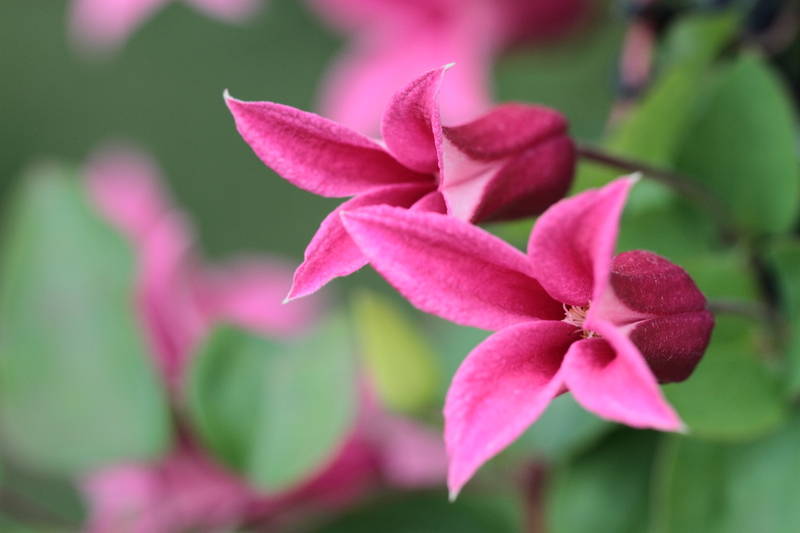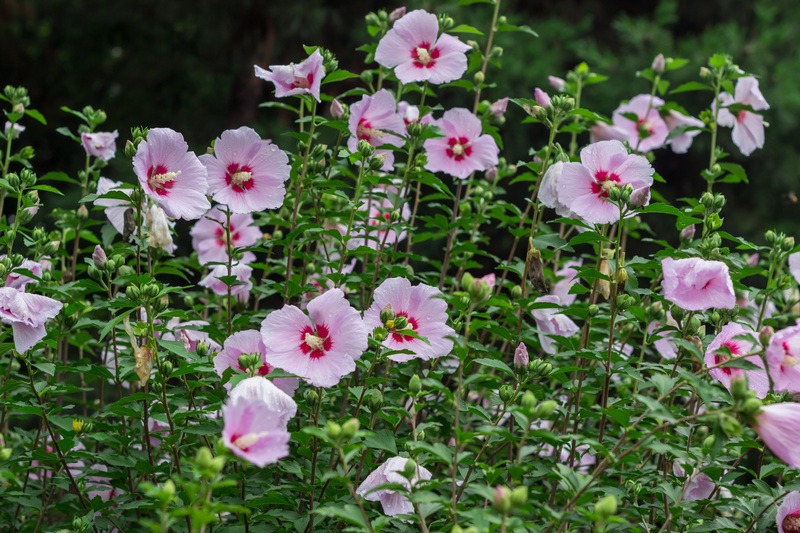Blossom Brighter: 9 Foundational Tips for New Garden Enthusiasts
Posted on 24/08/2025
Blossom Brighter: 9 Foundational Tips for New Garden Enthusiasts
Embarking on a gardening journey is both magical and rewarding. Whether your desire is to cultivate colorful blooms, grow your own vegetables, or simply create a beautiful outdoor retreat, a solid start is essential. This comprehensive guide, "Blossom Brighter: 9 Foundational Tips for New Garden Enthusiasts," offers vital advice to help you thrive as you nurture your first garden.
Why Gardening is the Ultimate Hobby
Gardening is more than just an outdoor activity. It offers a blend of mental relaxation, physical exercise, and creative satisfaction. For new gardening lovers, cultivating plants can foster mindfulness, promote eco-consciousness, and add immense value to your lifestyle. As you learn to blossom brighter, your outdoor space becomes an oasis of personal growth and tranquility.

1. Choose Your Garden Location Wisely
The foundation of a flourishing garden is its location. Whether you aspire to a lush backyard, a balcony paradise, or even container arrangements indoors, site selection determines what you can grow and how your garden will perform.
- Sunlight: Most flowers and vegetables require at least 6 hours of direct sunlight each day. Observe your yard at different times to identify the sunniest spots and track how long those areas receive full sun.
- Accessibility: Situate your garden where it's easy to water, weed, and harvest. A convenient location means you'll tend to your plants more regularly and spot issues earlier.
- Soil Drainage: Avoid low-lying zones where water pools after rain. Good drainage prevents root rot and supports plant health.
2. Understand Your Soil - Your Garden's Foundation
Great gardens begin with healthy soil! Before you even plant a seed, get to know your soil's composition and fertility.
- Test Your Soil: Use an easy DIY kit or local extension service to determine your soil's pH and nutrient levels. Knowing whether your soil is acidic, alkaline, or neutral is crucial for plant selection.
- Amend as Needed: Add organic matter, like compost or peat moss, to improve soil texture, fertility, and water retention. This step will ensure your garden bed supports robust plant roots and unlocks the potential for you to blossom brighter with every growing season.
The Secret to Loamy Soil
Loamy soil--a blend of sand, silt, and clay in balanced proportions--is ideal for almost every garden. If yours tends toward one extreme (too sandy or clayey), regular amendments with compost will bring it closer to the "golden standard."
3. Know What to Grow: Plant Selection for Success
Plant selection is where the fun begins! Be realistic, practical, and adventurous.
- Research Local Climate: Check your hardiness zone and frost dates. Choose plants that are proven performers in your region. Talk with local gardening centers or join online forums for regional insights.
- Start Simple: For a quick win, select easy-to-grow favorites like marigolds, zinnias, sunflowers, lettuce, radishes, or bush beans. These classics offer visible rewards early in your gardening journey.
- Mix Annuals and Perennials: Annuals offer fast color and quick results, while perennials come back year after year, forming the backbone of your flower garden.
4. Master the Art of Planting
Planting might seem straightforward, but attention to detail at this crucial gardening step ensures every seedling has the best chance to establish and blossom brighter.
- Transplants: Handle roots gently. Dig a hole twice as wide as the root ball, and plant at the same depth as the pot. Water thoroughly after planting.
- Seeds: Follow the spacing and depth recommended on the packet. Thin seedlings as they grow to prevent overcrowding.
- Containers: Use quality potting soil and containers with good drainage. Container gardening is ideal for beginners seeking control over soil quality and placement.
5. Water Smartly and Consistently
Watering can make or break a new garden. Most plants prefer deep, infrequent watering to frequent, shallow sprinkling.
- Morning Routine: Water early in the day to minimize evaporation and reduce the risk of fungal diseases.
- Check the Soil: Stick your finger an inch into the soil. If it's dry at that depth, it's time to water.
- Mulch Matters: Add a layer of mulch (like shredded bark, straw, or compost) to retain moisture, regulate soil temperature, and suppress weeds.
Remember, every garden is unique. Adjust your watering schedule as you get to know your particular conditions and plant needs.
6. Fertilize Thoughtfully for Vibrant Growth
Feeding your plants gives them the power to put on a show. But more isn't always better--use fertilizer wisely for maximum bloom!
- Type and Timing: Choose the right fertilizer (balanced, organic, slow-release, or specialized blends) for your garden's needs. Apply during planting and according to package instructions as your plants mature.
- Don't Overdo It: Excessive fertilizing leads to lush leaves but fewer flowers or veggies. More is not always better!
7. Regular Maintenance: Weeding, Pruning, and Pest Control
Healthy gardens require regular attention--not only for aesthetics but also for plant vitality.
- Weeding: Remove weeds early and often. These intruders compete for water, nutrients, and light, and can harbor garden pests.
- Pruning: Deadhead spent blooms to encourage new flowers. Prune shrubs and dead branches to foster healthy growth.
- Pest Management: At the first sign of trouble, identify the culprit. Use organic methods when possible--like hand-picking, neem oil, or introducing beneficial insects.
8. Be Prepared for Seasonal Changes
A thriving garden is a year-round pursuit. Understand your area's climate cycles to stay ahead. Preparation is key to a blooming garden!
- Spring: Start seeds indoors, prepare beds, and plant out cool-season varieties.
- Summer: Establish watering routines, watch for pests, and enjoy the main flush of blooms or crops.
- Autumn: Plant bulbs and perennials, mulch, and clear dead material to prepare for winter.
- Winter: Clean tools, plan for next year, and dream of the blossoms yet to come!
9. Record, Reflect, and Learn
Every season in your new garden will teach you something. Recording your gardening journey ensures you blossom brighter each year.
- Keep a Garden Journal: Track planting dates, weather, successes, and failures. Photos are also invaluable!
- Join a Community: Connect with local garden clubs, online forums, or social media groups. Sharing questions and triumphs with fellow enthusiasts accelerates learning--and adds fun to the process.
- Celebrate Growth: Don't fixate on setbacks; every gardener faces challenges. Celebrate every flower, fruit, and lesson learned as you evolve your green thumb.

Frequently Asked Questions for First-Time Gardeners
What are the easiest flowers and vegetables for beginners to grow?
Zinnias, marigolds, sunflowers, lettuce, radishes, and bush beans are practically foolproof and rewarding choices for anyone hoping to see their outdoor space blossom brighter quickly.
How often should I water my garden?
Most gardens do best with 1 to 2 inches of water per week. Always check soil moisture before watering. Many experienced gardeners invest in a simple moisture meter.
Can I garden if I only have a balcony or patio?
Absolutely! Container gardening is ideal for small spaces. Choose compact varieties and ensure good drainage for blossoming results.
Final Thoughts: Embrace the Journey to Blossom Brighter
Starting your first garden is a joyful step toward a more vibrant life. By learning these foundational gardening tips, you'll set yourself up for seasons of blossoming beauty and bounty. Patience, observation, and care are the secrets to success.
As you implement these expert strategies and let your passion guide you, your garden will soon echo with the sound of birds, the fragrance of flowers, and the pride of homegrown harvests. Here's to every new garden enthusiast--may your love for growing always help you blossom brighter!

